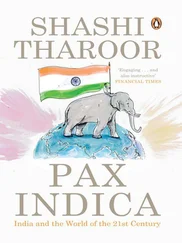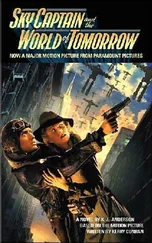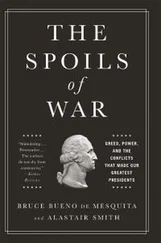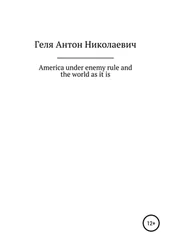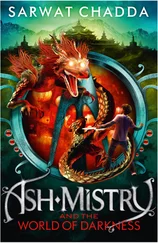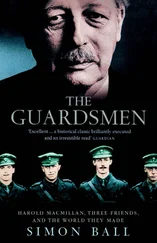Anne Heller - Ayn Rand and the World She Made
Здесь есть возможность читать онлайн «Anne Heller - Ayn Rand and the World She Made» весь текст электронной книги совершенно бесплатно (целиком полную версию без сокращений). В некоторых случаях можно слушать аудио, скачать через торрент в формате fb2 и присутствует краткое содержание. Жанр: Биографии и Мемуары, на английском языке. Описание произведения, (предисловие) а так же отзывы посетителей доступны на портале библиотеки ЛибКат.
- Название:Ayn Rand and the World She Made
- Автор:
- Жанр:
- Год:неизвестен
- ISBN:нет данных
- Рейтинг книги:5 / 5. Голосов: 1
-
Избранное:Добавить в избранное
- Отзывы:
-
Ваша оценка:
- 100
- 1
- 2
- 3
- 4
- 5
Ayn Rand and the World She Made: краткое содержание, описание и аннотация
Предлагаем к чтению аннотацию, описание, краткое содержание или предисловие (зависит от того, что написал сам автор книги «Ayn Rand and the World She Made»). Если вы не нашли необходимую информацию о книге — напишите в комментариях, мы постараемся отыскать её.
Ayn Rand and the World She Made — читать онлайн бесплатно полную книгу (весь текст) целиком
Ниже представлен текст книги, разбитый по страницам. Система сохранения места последней прочитанной страницы, позволяет с удобством читать онлайн бесплатно книгу «Ayn Rand and the World She Made», без необходимости каждый раз заново искать на чём Вы остановились. Поставьте закладку, и сможете в любой момент перейти на страницу, на которой закончили чтение.
Интервал:
Закладка:
The love affair didn’t end happily. Rand was open, possibly too open, about her feelings. She pursued him, and he didn’t like it. “I knew he didn’t like it,” she would later say. He continued to see other girls, and after a few weeks, he stopped asking her out. When they met, usually because the resourceful Rand had found out where to find him on a particular evening, he pointedly ignored her. Still, until she left the country in 1926, she continued to see him at occasional social gatherings. In 1924, he contracted tuberculosis and traveled to the Crimea to be treated in a state-run sanatorium, much as We the Living ’s Leo would do. In 1933, by which time Rand had established herself as a Hollywood screenwriter and was married, she learned from her cousin Nina that Lev, too, had married, divorced, and married again, each time to an unappealing, frowsy, ordinary woman. She was shocked by this, she said in 1960. “The whole issue [of Lev] … is still an unfinished story in my mind. My only explanation [for his choice of partners] … would be what I wrote about Leo in We the Living , that it was deliberate self-destruction, deliberately consigning himself to mediocrity, because [whatever] higher values [he possessed] were not possible there,” amid Russian Communist repression. In May 1937, during the height of the Stalinist Terror, Lev was put to death under a Soviet statute that mandated the execution of black marketers and perpetrators of terrorist acts against the state; he had been accused of plotting to blow up tanks in the Leningrad factory where he worked. She never learned of his death, but it’s not hard to imagine the fictional Leo Kovalensky ending his life in much the same way, had Rand’s heroine Kira only survived to witness it.
In a haunting irony, Rand herself might have been present for Lev’s death if, in 1922 or 1923, he had reciprocated her feelings for him; much later she said that she would almost certainly have remained in Russia had her first love loved her, too. “I would have stayed … and I would have died there,” she told a friend.
Exactly how this early romantic disappointment affected her life and work is hard to gauge. By the time she spoke about it with someone who recorded her remarks, she had been married for thirty years and was engaged with a much younger man in a long-term love affair. But in a letter from 1927, her mother reminded her that during those years she had spent hours in her bedroom, “yelling in despair.” In a chronological list of music she loved, her favorite piece for the year 1924 was “Simple Aveu,” by French composer Francis Thomé, the only melancholy music on the list. Lev’s rejection may help to explain why, after We the Living ’s Kira, Rand’s heroines would tend to be romantically and sexually submissive hero-worshipers, while Rand herself remained aggressive in pursuit of anything she wanted, including men.
Just as she loved military marches and light Italian opera, Rand developed a passion for the elaborately staged Viennese and German operettas that, for a brief period, the Bolshevik government made available and affordable in state-run musical theaters such as the Mikhailovsky. She waited in line for hours each Saturday morning to buy cheap tickets for the back row of the fourth and highest balcony. During her first two years at the university, “I was there every Saturday,” she recalled. But soon an even more alluring opportunity arrived: to see the masterful, thrillingly melodramatic new silent films directed by D. W. Griffith, Fritz Lang, Ernst Lubitsch, and Cecil B. DeMille. She and her family had been attending Russian-made movies since 1913. As a nine-or ten-year-old, she had even composed two childish film scenarios, one of them about a woman who has to choose between her husband in prison and her child; in a decision that reverberates eerily down the years, precocious young Rand’s heroine chooses the husband. (The child lived anyway, she said, so there was “a happy ending.”)
Starting in 1923, however, during the NEP period, sophisticated American and European films began making an appearance in small, inexpensive, privately run theaters on the outskirts of the city. She took full advantage of them, seeing more than one hundred movies, some three or more times, in the years before she emigrated. “It was almost as if I had a private avenue of seeing the world outside,” she later said. She loved the tangled plots, glamorously costumed stars, and exotic settings of movies like Intolerance, Lucrezia Borgia , and The Isle of Lost Ships . Her favorite film was Joe May’s 1921 melodrama The Indian Tomb , starring Conrad Veidt as Prince Ayan, a nefarious Bengali maharaja who bribes a yogi to capture and kill his wife’s lover, a British army officer played by Paul Richter. A British architect (Olaf FØnss) and his wife (Mia May) track Prince Ayan and foil his murderous scheme. The film ends with an elaborate, triumphant chase scene in the Bengal mountains. If this sounds suspiciously like the story line from Maurice Champagne’s The Mysterious Valley , Rand never noted the resemblance and perhaps was never conscious of it.
Veidt, a German Jew, became her favorite movie actor until she encountered Gary Cooper in the late 1920s. Veidt was a screen idol in Russia, and Rand’s infatuation with him brought out a trait that was present from early childhood: intellectual possessiveness. When people she didn’t know or like spoke admiringly of Veidt, she felt anger, she recalled. She had chosen him; other people weren’t worthy of him. Not for her was “a heart like a pavement, trampled by many feet.”
Rand’s introduction to American silent films was the fourth defining experience of her university years. There, she got her first glimpse of the New York skyline, which would become for her an emblem of creativity and liberty in the capitalist free world. Although Soviet government censors always added absurd subtitles to the films, she said—turning an ordinary American family dinner scene into a portrait of greed, for example, by labeling it “A capitalist eating well on profits wrung from his starving workers”—she and other Russians understood this to be nonsense, or “applesauce,” as she called it. Her enthusiasm for America was forged in movie theaters. The films she saw inspired her to picture it as “Atlantis”: the ideal existence for intelligent, purposeful, ruggedly individualistic men and, presumably, women. America, she decided, was the place on earth where she would find real people and the country in which she wanted to live and work.
Meanwhile, in spite of new cinemas and state-sponsored operettas, 1923 and 1924 saw the city under renewed political and economic siege. For the previous two years, Lenin had been preoccupied with quelling far-flung rebellions and a nationwide famine. Now, as he and his deputy Joseph Stalin focused on the cities, the repression grew harsher. Food rations were cut to one thousand calories a day. Diseases of dirt and poverty such as cholera, typhoid, rheumatic fever, and tuberculosis swept the city, exacerbating Rand’s and Anna’s fear of germs. Russia officially became the Soviet Union, and the regime began busily rolling back the NEP—eliminating the jobs it had created and the useful products and services it brought to market—while intensifying its attack on the remnants of the middle class. Workplaces and schools were purged of political undesirables, which meant that becoming an informant against fellow students or workers and attempting to join the Communist Party were among the few strategies to try to stay alive. Candid speech was dangerous and dissent was deadly. The light of academic discourse was quickly going out.
In 1923 the Rosenbaums found an apartment of their own at 16 Dmitrovski Lane, a few blocks from their prerevolutionary home. Grandfather Berko Kaplan and Rand’s cousin Leonid Konheim joined them there. Though the family had more space, their lot was dreary. In a city festooned with fraying Red banners, they cooked their thousand calories a day on a smoky kerosene stove called a “Primus” and at celebrations ate cakes made of potato peelings, carrot greens, coffee grounds, and acorns. When there was fuel, they read by kerosene. Rand recalled that her one party dress was refashioned from an old summer coat of her mother’s, which Anna must have carefully packed, repacked, and carried to the Crimea and back again.
Читать дальшеИнтервал:
Закладка:
Похожие книги на «Ayn Rand and the World She Made»
Представляем Вашему вниманию похожие книги на «Ayn Rand and the World She Made» списком для выбора. Мы отобрали схожую по названию и смыслу литературу в надежде предоставить читателям больше вариантов отыскать новые, интересные, ещё непрочитанные произведения.
Обсуждение, отзывы о книге «Ayn Rand and the World She Made» и просто собственные мнения читателей. Оставьте ваши комментарии, напишите, что Вы думаете о произведении, его смысле или главных героях. Укажите что конкретно понравилось, а что нет, и почему Вы так считаете.

